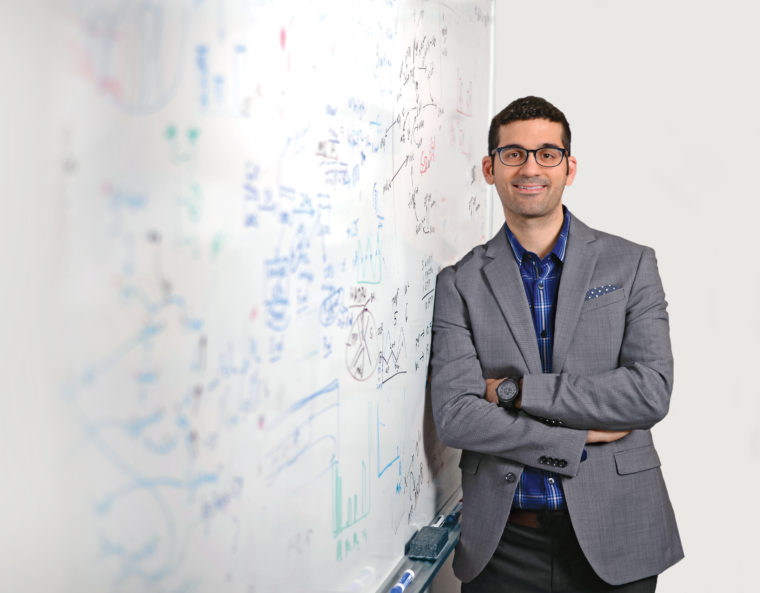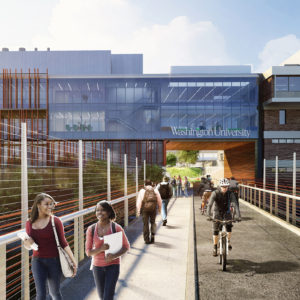Every Friday evening, you stop at the corner convenience store on your way home from work and purchase your weekly allotment of lottery tickets, one, for the Saturday evening drawing. You figure, why not? Even though your chances are around 1 in 292 million, your investment is low and you still have a chance to win. Right?
Now imagine if you pooled your money with 99 single-ticket buyers each week. Your odds to win would still be long, but you’d have increased them nonetheless.
Gary Patti, associate professor of chemistry, uses the lottery-pool analogy to explain his innovative approach to conducting research.
Historically, researchers have used the scientific method, where you start with a specific question, develop a hypothesis for that question, and then design an experiment to test that hypothesis. If the experiment holds, then you progress; if not, you have to redesign your hypothesis.
In Patti’s lab, however, they flip this paradigm on its head, running massive numbers of experiments, reviewing enormous amounts of data, and then trying to construct a hypothesis from the results.
“In some sense, it’s an evolution of how we drive discovery. Historically, we’d test one thing and would do one experiment; it was like buying one single lottery ticket,” Patti says. “But now, because of advances in instruments and computers, we can test thousands of things at once, much like having thousands of lottery tickets, and this increases our probability of finding something really exciting.”
To conduct this type of research, Patti says, you need advanced equipment that, instead of measuring one or two compounds per experiment, can measure 40,000 in 1/1,000th of the time. Further, you need extremely fast computers to search for patterns — these complex experiments exceed our capacity to mine all the data manually — and algorithms to determine correlations between signals.
That’s why Patti is eager for his new lab, where he will have more instrumentation, more technology, more trainees and more space for collaborators — hence a much larger probability for scientific discovery.
Today’s researchers and students must have diverse skill sets as well. “The nature of science, and this gets to one of our themes of Driving Discovery, is interdisciplinary,” Patti says. “Here, we’re not limited only to chemistry students. In my lab, we have students from computer science, molecular biology, genetics and engineering. And those students are pushing the chemistry students to do more computational stuff and genetics, while the chemistry students are pushing them to think more about where the electrons are in a specific biochemical reaction. This creates a really great educational experience for everyone, including me.”
In this synergistic environment, Patti, a pioneer in metabolomics — the study of metabolites present within an organism, tissue or cell — researches how the complexities of metabolism influence health and disease. One new focus of his lab is developing advanced therapies to disrupt the growth of cancer cells. Just imagine the impact such a breakthrough would have on society — a long shot perhaps, but definitely a chance worth investing in.
— Terri Nappier is editor of this magazine.
Editor’s note: See drivingdiscovery.wustl.edu to learn more about Arts & Sciences’ strategic vision for the future of the natural sciences at Washington University and the collaborative and impactful work of our faculty and students.

